CS 3451, Spring 2012
Homework 1: Transformations and Projection
Due: 11:55pm, Monday, February 6, 2012
Objective
The goal of this assignment is to write the routines that
allow a user to transform and view 3D graphical objects. In particular, you will
write the routines for creating line drawings of both orthographic and
perspective scenes. You will use Processing to write all of this code. The transformation routines that you create will implement a
matrix stack and will allow you to arbitrarily rotate, translate and scale an
object. To make this assignment easier, routines will be provided for you that
implement line clipping and line drawing. The images that you create for this
exercise will be three dimensional line drawings of scenes with no hidden
surfaces or filled polygons. All of the lines will be uniformly white so that
you will not need to perform color interpolation.
Routines You Will Create
In this assignment you will be creating
routines that mimic the behavior of several OpenGL library routines. Below is
the list of routines that you will create for this assignment.
- gtInitialize()
- The gtInitialize command should initialize your matrix stack to have just
a single matrix on the stack. This matrix should be the identity matrix.
- gtPushMatrix(), gtPopMatrix()
- The gtPushMatrix command replicates the
matrix at the top of the matrix stack and places this new matrix on top of
the stack. This new top matrix is now the current transformation matrix. The
gtPopMatrix command pops the top matrix off the stack, causing the next matrix
down to become the current transformation matrix. An error message should be
printed if a pop is attempted when only one matrix is on the stack. As
described under the gtInitialize command, the matrix stack is initially
created with an identity matrix as the only matrix on the stack. Your stack
only needs to handle up to 10 matrices on it at any one time.
- gtTranslate(float tx, float ty, float tz)
- Multiply the current transformation matrix on the right by a matrix
specifying a translation of (tx, ty, tz). The current transformation matrix is
defined to be the top matrix on the matrix stack.
- gtScale(float sx, float sy, float sz)
- Multiply the current transformation matrix on the right by a matrix
specifying a (possibly non-uniform) scaling of (sx, sy, sz).
- gtRotate(float angle, float ax, float ay, float az)
- Multiply the current transformation matrix on the right by a matrix that
specifies a rotation of "angle" degrees about the axis (ax, ay, az). The
rotation is counter-clockwise as one looks from the position (ax, ay, az)
towards the origin. For example, the command gtRotate (30.0, 1.0, 0.0, 0.0)
specifies a 30 degree rotation counter-clockwise around the x-axis.
- gtOrtho(float left, float right, float bottom, float top, float near, float far)
- Specifies that a parallel projection will be performed on subsequent
vertices. The direction of projection is assumed to be along the z-axis. The
six values passed to this routine describe a box to which all lines will be
clipped. The "left" and "right" values specify the minimum and maximum x
values that will be mapped to the left and right edges of the framebuffer. The
"bottom" and "top" values specify the y values that map to the bottom and top
edges of the framebuffer. The "near" and "far" values specify the nearest and
farthest z values that will be drawn. The eye point is assumed to be facing
the negative z-axis, so the "near" and "far" values actually define clipping
planes along negative z.
- gtPerspective(float fov, float near, float far)
- Specifies that a perspective projection will be performed on subsequent
vertices. The center of projection is assumed to be the origin, and the
viewing direction is along the negative z-axis. The value "fov" is an angle in
degrees that describes the field of view. In order to make it easier to write
this routine, we will assume that all screen sizes will be square, so you
don't need to worry about the vertical and horizontal field-of-view being
different. The "near" and "far" values specify the locations along the
negative z-axis at which to perform near and far clipping in z (just as in the
gtOrtho command).
OpenGL uses a separate matrix to do projection that is different than the
current transformation matrix and its associated stack. This means that in
OpenGL, you can specify projections at any time before you draw lines and
polygons. We will do the same for our assignment. Which ever projection that
you specify (gtOrtho or gtPerspective) should be the last transformation that
is applied to the line endpoints, regardless of where those procedure calls
appear with respect to other transformations.
- gtBegin(GT_LINES), gtEnd(), gtVertex3f(float x, float y, float z)
- The gtBegin and gtEnd commands signal the start and end of a list of
endpoints for line segments that are to be drawn. Each call to the routine
gtVertex3f between these two commands specifies a 3D vertex that is a line
endpoint. White lines are drawn between successive odd/even pairs of these
vertices. If, for example, the four vertices v1, v2, v3, v4 are given in four
sequential gtVertex3f commands then two line segments will be drawn, one
between v1 and v2 and another between v3 and v4.
The vertices of the lines are modified in turn by the current
transformation matrix and then by which ever projection was most recently
described (gtOrtho or gtPerspective). Only one of gtOrtho or gtPerspective is
in effect at any one time. These projections do not affect the matrix stack
and the current transformation matrix. Your gtBegin, gtVertex3f and gtEnd
commands must be able to draw any number of lines. You should draw the lines
as soon as both vertices are given to you (using gtVertex3f), so there is no
need to store more than two vertex positions at any time.
Code Provided
Two routines will be provided for you that will perform the necessary
clipping and drawing of lines. This means that there is no need for you to write
any clipping or line drawing code. These routines are:
What You Will Write
You will write code ONLY
in the file matlib.pde. All of your routines should be contained in
matlib.pde. We have provided a "dummy" version of matlib.pde that you can use
as a starting point for creating your own complete version.
All test samples have already been contained in the provided code. Pressing
keyboard keys 1-9 and 0 calls the 10 test samples respectively.
Suggested Approach
First, become familiar with using the draw_line
routine. Second, implement the matrix stack and the gtTranslate and gtScale
commands. Test them out by applying the current transformation matrix to the
line endpoints and then just draw lines by ignoring the z-values. Third, write
the gtOrtho command. This should be fairly straightforward once you have already
drawn some lines by ignoring the z-values of the transformed vertices. Fourth,
implement the gtPerspective command. The best way to test out this routine is to
carefully work out some simple test cases on paper and match the execution of
your code with these worked-out examples. Finish by implementing the gtRotate
command. Logically this command should be implemented together with gtScale and
gtTranslate, but it is a little tricker. You will need to create and manipulate
matrices and vertices in order to implement the transformation routines. Here
are possible definitions:
class gtMatrix {
float[][] m;
gtMatrix() {m = new float[4][4];}
}
class gtVertex {
float[] v;
gtVertex() {v = new float[4];}
}
Because the last row of a typical transformation matrix is 0 0 0 1, you
may instead choose to use 4 by 3 matrices. You may also decide not to store the
implicit 1 that is the fourth element of a homogeneous coordinate of a vertex.
Two important routines that you will need to write are matrix-matrix
multiplication and matrix-vector multiplication. Your choices of data
structures will affect the details of these routines.
You will probably write routines that perform operations such as matrix
multiply and vector cross-product. It is easy to accidentally write a routine
that clobbers some of the results if the routine is called using the same matrix
more than once. For example, the invocation "mult_matrices (a, b, b)" is
meant to multiply a time b and put the result in b. If you are not careful,
however, you will overwrite part of b before you use all of the values in that
matrix. The best way to avoid this is to place all your results in a temporary
matrix and then copy the results to the final destination when you are finished.
Authorship Rules
The code that you turn in entirely your own. You are
allowed to talk to other members of the class and to the Professor and the TA
about general implementation of the assignment. It is, for example, perfectly
fine to discuss how one might organize the data for a matrix stack. It is also
fine to seek the help of others for general Processing/Java programming questions. You
may not, however, use code that anyone other than yourself has written. Code
that is explicitly not allowed includes code taken from the Web, from books,
from previous assignments or from any source other than yourself. The only
exception to this rule is that you should use the GT Graphics Library routines
and the test code that we provide. You may NOT use other library routines for
matrices and stacks. You should not show your code to
other students. Feel free to seek the help of the Professor and the TA's for
suggestions about debugging your code.
Development Environment
You must use the Processing
language which is built on Java.
The best resource for Processing language questions is the
online or
offline Processing language API (found in the "reference" subdirectory
of the Processing release).
Sample Results
pic01.jpg
pic02.jpg
pic03.jpg
pic04.jpg
pic05.jpg
pic06.jpg
pic07.jpg
pic08.jpg
pic09.jpg
pic10.jpg
All 10 results zipped: hw1_results_png.zip
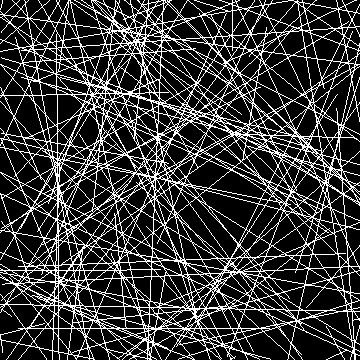
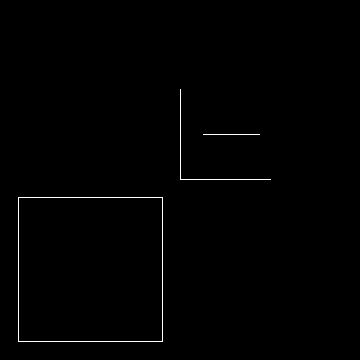
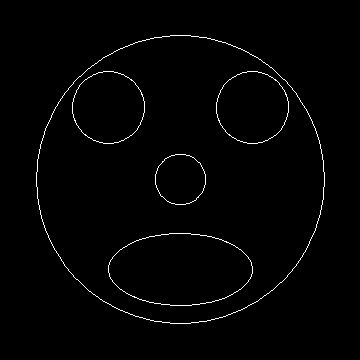
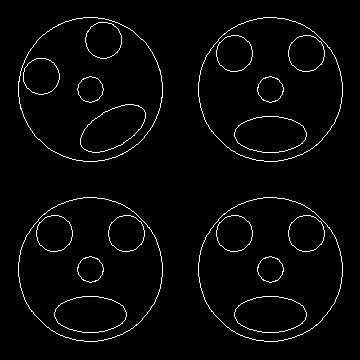
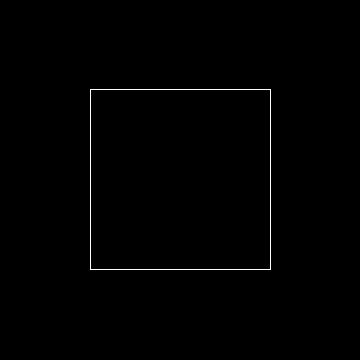
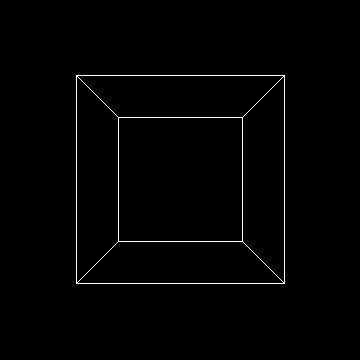
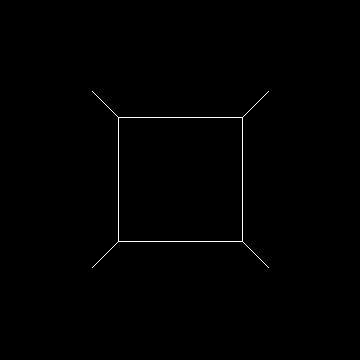
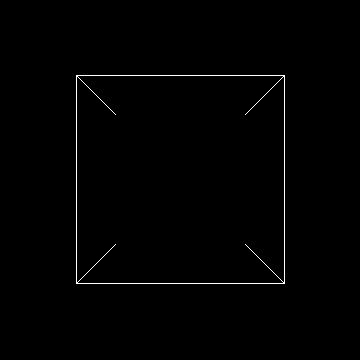
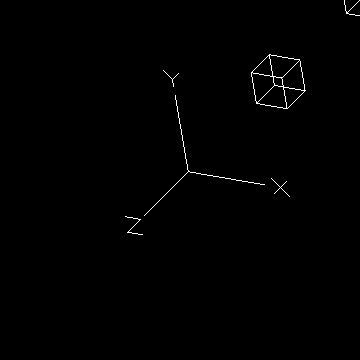
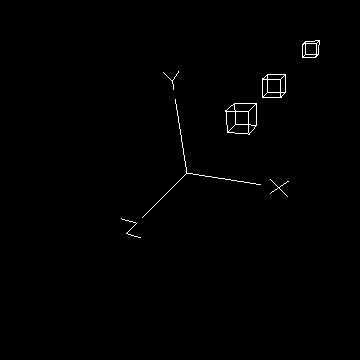
What To Turn In
Compress the whole folder (not merely the files within
the folder) into a zip archive and submit it in T-square for Project 1. The zip archive should be included as an attachment. The filename should be "lastname_firstname_project_1.zip".
For example, Greg Turk would create "turk_greg_project_1.zip" for his
homework 1. When unzipped,
it will produce the folder "ldraw" containing the files "ldraw.pde",
"gtGraphics.pde", "lines.pde", and "matlib.pde".









